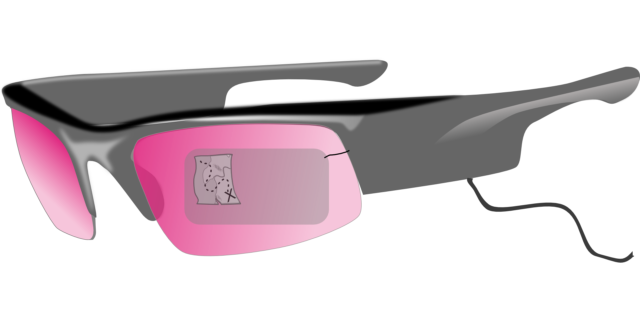Each morning I wake up wondering which outfit to wear. Shirt, hoodie or sweater? Conference, work or seminar? Steve Jobs had nailed it. Black turtlenecks, skinny jeans and white sneakers became the wannabe yuppie classic often donned by my university mates. But I can’t deny their reasoning – smart clothing elicits a sense of smartness. And sometimes, it can be a chore to introspect my mood and my plans for the day ahead.
Embedding smart technology
Hence suppose our style morphed with our changing thoughts, attitudes and activities. Quite a different kind of smart clothing, right? Well, that’s exactly the kind human-centred researchers from MIT to Google to Samsung have been striving to knit.
Enabled by quantum leaps in electronic textiles (e-textiles), scientists are discovering effective ways of seamlessly fusing fabrics with conductors.

Successful applications have by and large revolved around health and luxury modules like therapeutic wearables and automotive interiors respectively.
Designers have now found exciting ways to electrify the fashion industry.
Here are some recent products marketed in the niche world of embedded fashion:
Athletic Apparel
Luxury brands are keen to capitalise on the new wave of smart fitness, among them the iconic Ralph Lauren’s PoloTech. It is “embedded with sensors to track vital signs like breathing and heart rates, stress levels and calories burned”. Developed in partnership with neuroscientists and engineers with backgrounds in sports medicine, data is gathered to recommend workout routines.
Businesswear
Samsung has ventured into stylish businesswear. Through their new wearable platform, The Human Fit, NFC-enabled smart clothing will unlock and charge phones via integrated solar panels. And most importantly, exchanging digital business cards. Impressive, very nice! Now let’s see Apple’s businesswear…
Casual Gear
“Tommy Jeans Xplore is the next evolution of our vision, reaching consumers where they are and inviting them to be a part of the brand experience,” notes the premium fashion brand. Wearers can net reward points for sporting their products in exchange for gift cards and VIP tickets to #Tommynow runways. So… this ‘brand experience’ – facilitated by in-built Bluetooth chips – is in fact a way to monitor product usage.
I suggest a less-revealing user-tracker: Levi’s Commuter x Jacquard. This denim jacket is notable for embedding Google’s haptic ‘Jacquard’ technology. You can control music, reject phone calls and activate Google Maps by merely stroking the cuffs of this distinctive jacket. Perfect for cyclists!
Some Really Smart Clothing?
You are wondering how the supposedly smart clothing examples above are any more futuristic than smart pyjamas, goggles and panties. Sure, they are cool and unique to don – if you have more than £200 to spare per item that is.
But they can’t exactly “morph”. The issue being, these fancy collated datasets don’t significantly alter the wearer’s experience with their smart clothing.
The following garments and prototypes push towards this direction in creatively quirky fashion:
Self-heating Outerwear
“When walking to their train stop – elevating body temperature – the jacket combines both the outdoor and internal temperatures to regulate heat distribution,” explains designers at Ministry of Supply. This MIT alum-led clothing start-up released “the first intelligent heated jacket” in the world back in 2018.
Their technology draws upon NASA’ s astronaut suits. Built-in thermostats hooked with an accelerometer can regulate the wearer’s temperature via Alexa-powered voice activation. It can also switch on automatically in response to inertial changes or external temperature drops. Even a hand-warming pocket is included in the near-£200 retail tag!
The team is currently working on adding machine-learning capability to decipher users’ preferences. What next, a sentient, emotional dress?
Emotional Dress
To provide novel ways of stress-relief in our daily ups-and-downs, researcher Iga Węglińska built colour-changing tops as her doctoral dissertation. Her reactive “chameleon” garments are “intended to expand the limits of experiencing clothing through experiences based on sensory substitution.”
Sensors monitoring the wearer’s heart rate, temperature and electrodermal activity (changes in sweat glands) trigger mesmerising changes in embedded LEDs. Stress visually manifests itself to “stimulate cognitive involvement and mindfulness”, allowing wearers to be “informed about their own body changes”.
No wonder – anyone forced to put on a saggy light-emitting balloon-dress to pose for the camera undoubtedly sweats a river! Just kidding. After all, I’m no qualified fashionista.
Haptic Suit
This cutting-edge smart clothing is cut straight out of Ready Player One. Much like the emotional dress, its biometrical feedback system relies upon input from galvanic skin response and ECG sensors. Subsequently, it can “hack our sensory system” via pulses of electroshock that stimulate the sensation of touch! This polysensory garment goes beyond, however, by marrying motion capture to the mix – it tallies each gesture to mobile screens.
The polygamy of sensors lends itself notably well to VR-enabled gaming and sports. As a result, players can “train with autonomy” using pre-trained model trainer inputs embedded in simulations. This feature is best illustrated in this video of wearers feeling the jolts of F1 racing.
There is also not-so-electrifying speculation on usage in military training. Soldiers will be able to experience controlled shocks of being shot without lasting wounds. Disregarding the ethics of warfare, it will no doubt ensure the safety of those in service.
Not so smart after all?
WARNING: Do not wash smart clothing – at least not straight into the washer! All the precious electronic devices embedded within should be taken out – if that even is possible.
Breakthroughs in sustainable e-textiles are yet to make their appearance in mass-produced consumer-grade products. Although machine-washable and twisty electrodes do exist, they must be cost-effective for manufacturers. Furthermore, there are serious safety considerations concerning the textiles themselves.
I’d initially set out to review garments that reflect our mood. Perhaps a few AI-enabled digitalised shirts that pay homage to Hypercolor’s thermochromatic dye. Now I realise there are hundreds of companies providing gateways to access embodied knowledge, blurring the definition of smart clothing.
Stay tuned next week to read more about the broader take on “smart”: sustainable clothing, turning old into new.





